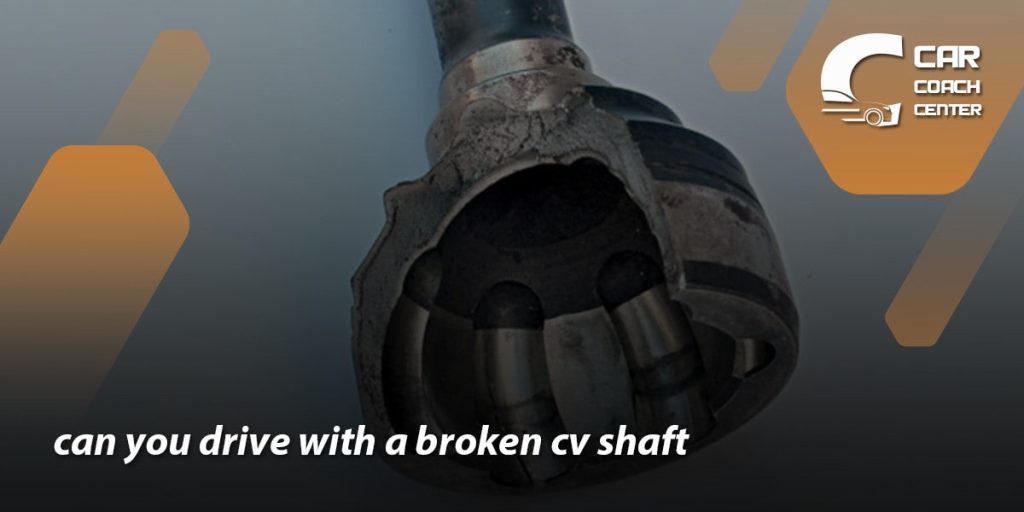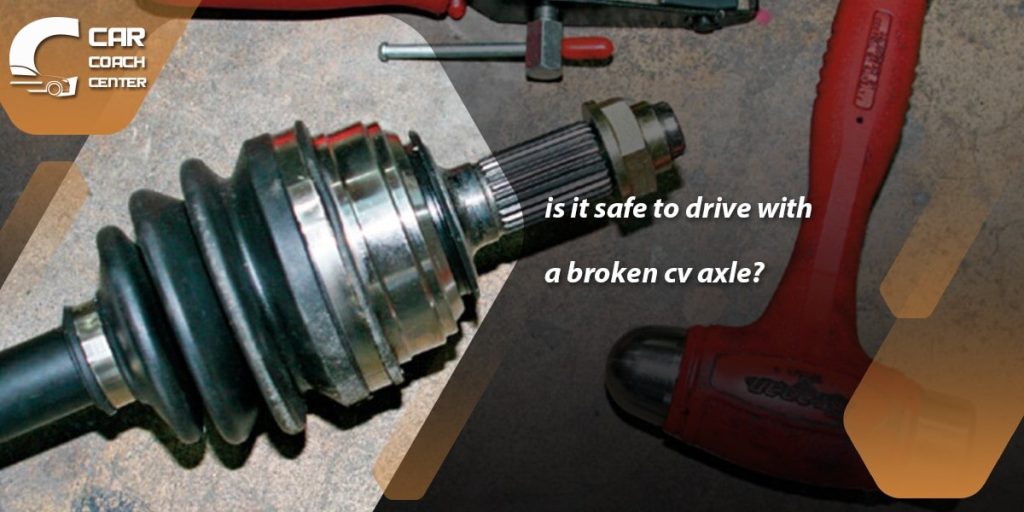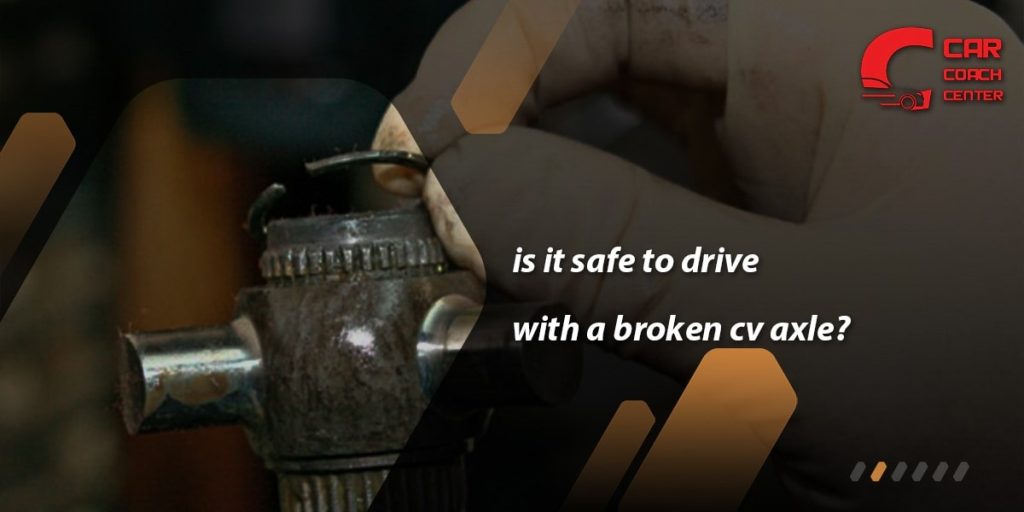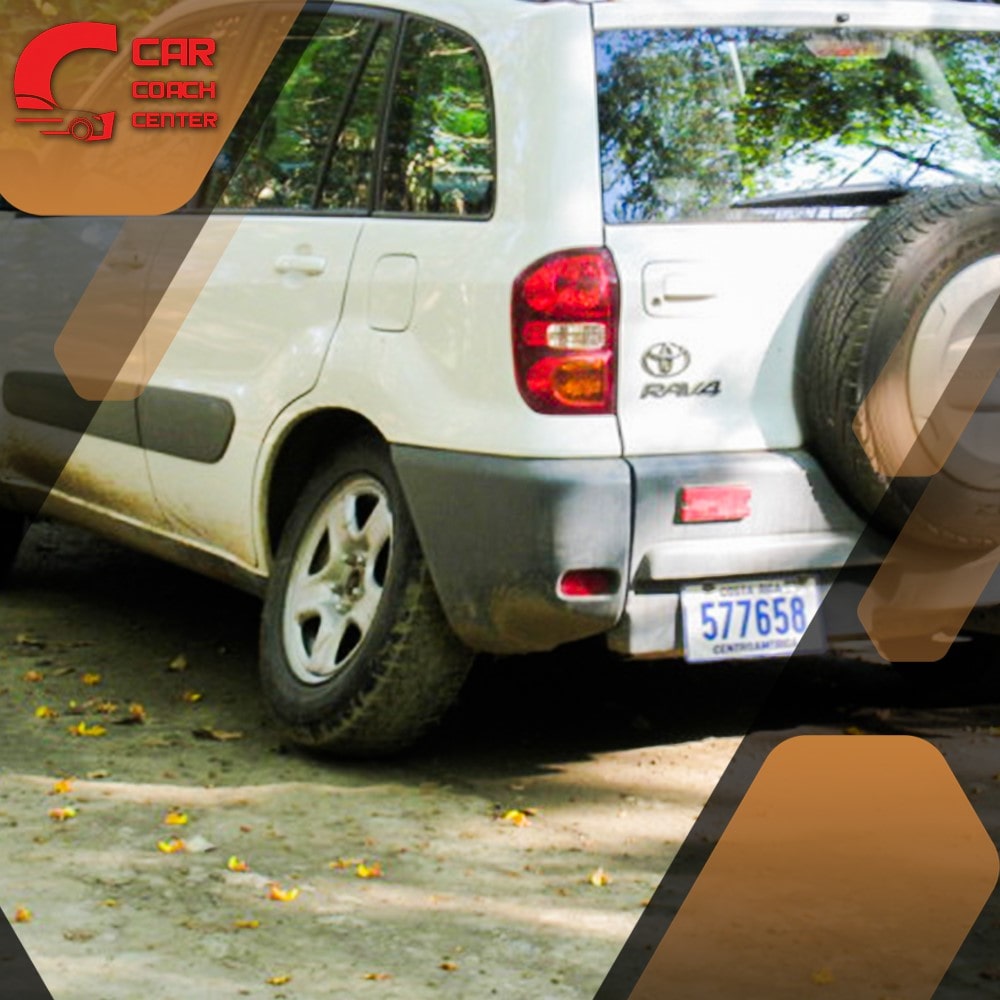Can You Drive With A Broken CV Axle
The CV axle, or the constant velocity axle, is crucial in transferring power from the engine to the wheels, enabling your vehicle to move efficiently and smoothly. However, CV axles are not impervious to wear and damage like any automotive component. A broken CV axle can have significant implications for the performer vehicle’s safety, and the longevity of your vision arises: can you drive with a broken CV axle?

In this article, we will explore the various aspects surrounding this issue. We will delve into the signs and symptoms of a broken CV axle, the potential risks associated with driving in such a condition, the immediate steps you should take if you find yourself with a broken CV axle, and whether it is possible to drive short distances with this type of damage.
Furthermore, we will highlight the importance of timely CV axle repair and provide useful tips for preventing such damage in the first place. So, let’s dive in and gain a comprehensive understanding of driving with a broken CV axle and the best course of action when faced with this situation.
Symptoms of a Broken CV Axle: How to Identify the Issue
A broken CV axle can manifest in various symptoms, which, if identified early, can help prevent further damage and ensure your safety on the road. Here are some key signs to watch out for when trying to identify a broken CV axle:
Unusual Noises
One of the most common indicators of a broken CV axle is strange noises from the affected wheel. You may hear clicking, popping, or grinding sounds, especially when making turns or accelerating. These noises are caused by the damaged axle joint struggling to transmit power smoothly.
Vibrations
A broken CV axle can cause noticeable vibrations in the steering wheel or vehicle chassis. These vibrations can range from subtle tremors to pronounced shaking, particularly during acceleration or at higher speeds. The severity of the vibrations may increase as the damage to the axle worsens.
Difficulty Steering
Another symptom of a broken CV axle is difficulty steering the vehicle. You may experience resistance or a jerking sensation when turning the steering wheel, especially during sharp turns. This can be attributed to the compromised ability of the damaged axle to transfer power effectively.
Grease Leaks
Inspect the CV axle boots at the joints close to the wheels. If you notice any grease leaks, it clearly indicates that the protective boot has been compromised, allowing grease to escape and dirt to enter. This can accelerate wear and lead to a broken CV axle.
Wheel Slippage or Loss of Power
When a CV axle is broken, the affected wheel may exhibit signs of slippage or sudden loss of power. You might need more traction, especially when driving on slippery surfaces or accelerating quickly.
The Risks of Driving with a Broken CV Axle
Driving with a broken CV axle poses significant risks that should be noticed. While it may be tempting to continue driving, hoping to postpone repairs, doing so can have severe consequences. Here are some key risks associated with driving with a broken CV axle:
Loss of Vehicle Control
A broken CV axle can impair your ability to control the vehicle effectively. The compromised axle can lead to unpredictable steering behavior, making it difficult to navigate turns or maintain stability on the road. This loss of control increases the risk of accidents, especially in emergencies or adverse weather conditions.
Damage to Other Drivetrain Components
A broken CV axle puts additional stress on other components of the drivetrain. As the damaged axle struggles to transmit power, it can cause excessive strain on the differential, transmission, and wheel bearings. Over time, this can lead to expensive repairs or even complete failure of these vital components.
Wheel Separation
A broken CV axle may result in a wheel separation, particularly if the axle fails while the vehicle is in motion. This can cause the affected wheel to detach from the vehicle, resulting in a dangerous situation. Wheel separation poses a significant risk to you and other road users and can cause extensive damage to the vehicle and nearby infrastructure.
Costly Repairs
Ignoring a broken CV axle can escalate the damage and lead to more extensive repairs. What could have been a simple axle replacement might turn into a complex and costly repair process, including addressing damage to other related components. By addressing the issue promptly, you can save yourself from unnecessary expenses.
Compromised Safety
Driving with a broken CV axle compromises your and your passengers’ safety. The unpredictable handling, potential wheel separation, and reduced control increase the likelihood of accidents and injuries. It is crucial to prioritize safety and address the issue promptly to ensure the well-being of everyone on the road.

Immediate Steps to Take When Your CV Axle Breaks
Discovering a broken CV axle while driving can be alarming, but knowing the right steps can help you navigate the situation safely. Here are the immediate steps you should follow when your CV axle breaks:
Stay Calm and Maintain Control
It’s essential to remain calm and composed if you suspect a broken CV axle. Keep a firm grip on the steering wheel and try to maintain control of the vehicle. Avoid sudden or aggressive maneuvers that could exacerbate the problem or compromise your safety.
Safely Pull Over
As soon as it is safe, signal and move your vehicle to the side of the road. Choose a flat and secure area away from traffic. Use your hazard lights to alert other drivers of your situation. If you are on a highway or busy road, consider driving slowly to the nearest exit or a safer location before stopping.
Assess the Damage
Once you have pulled over, visually inspect the affected wheel and CV axle area. Look for any visible signs of damage, such as a broken axle shaft, torn CV axle boot, or grease leakage. Take note of any unusual sounds, vibrations, or steering difficulties you may have experienced before pulling over.
Avoid Driving Further
It is crucial to avoid driving any further if you suspect a broken CV axle. Driving with a damaged axle can lead to further complications, increased risks, and more expensive repairs. Driving with a broken CV axle may be impossible or unsafe if the damage is severe.
Seek Professional Assistance
Contact a professional mechanic or a roadside assistance service to assess the situation and arrange for your vehicle to be towed to a repair shop. Explain the symptoms you observed and provide details about your location for a quicker response. Only attempt to repair the CV axle yourself if you have the necessary expertise and tools.
Can You Drive Short Distances with a Broken CV Axle?
If you find yourself with a broken CV axle, you might wonder if driving short distances is possible before seeking repairs. While the situation may vary depending on the extent of the damage and other factors, it is generally not recommended to drive with a broken CV axle, even for short distances. Here are some considerations to keep in mind:
Increased Risk of Accidents
Driving with a broken CV axle, even for a short distance, significantly increases the risk of accidents. The compromised axle can lead to unpredictable handling, reduced control, and potential wheel separation. This poses a danger not only to you but also to other road users. Safety should always be a top priority.
Further Damage to the Drivetrain
Continuing to drive with a broken CV axle can cause additional damage to other drivetrain components. The strain placed on the differential, transmission, and wheel bearings due to the imbalance and lack of proper power transfer can result in costly repairs or even complete failure of these parts. Repairing or replacing a broken CV axle promptly can help prevent such damage.
Costly Repairs
Driving with a broken CV axle can worsen the damage, potentially leading to more extensive repairs. What could have been a straightforward axle replacement might turn into a complex repair process involving other components. Addressing the issue promptly can minimize repair costs and prevent further damage to your vehicle.
Towing as a Safer Alternative
When faced with a broken CV axle, towing your vehicle to a reputable mechanic or repair shop is generally advisable. Towing ensures that your vehicle remains safe and that the risk of exacerbating the damage minimizes. While it may incur an additional cost, it provides a safer and more reliable option for transporting your vehicle to a professional for repairs.

The Importance of Timely CV Axle Repair
When faced with a broken CV axle, it is crucial to prioritize timely repair or replacement. Ignoring or postponing the necessary repairs can significantly affect your vehicle and safety. Here are some key reasons highlighting the importance of addressing a broken CV axle promptly:
Prevent Further Damage
A broken CV axle can place additional stress on other drivetrain components, such as the differential, transmission, and wheel bearings. If left unattended, this can lead to accelerated wear and potentially more extensive damage. By promptly addressing the broken CV axle, you can prevent further damage to these components and save yourself from costly repairs down the line.
Maintain Vehicle Performance
The CV axle is vital in transferring power from the engine to the wheels. When broken or damaged, your vehicle’s performance can be compromised. Prompt repair or replacement of the CV axle ensures that power is efficiently transmitted, allowing your vehicle to operate optimally.
Ensure Safety
Driving with a broken CV axle poses significant safety risks. The compromised axle can lead to unpredictable handling, loss of control, or even wheel separation. These dangers increase the likelihood of accidents and jeopardize the safety of both you and other road users. Timely repair or replacement of the CV axle is essential to maintain the safety of your vehicle and ensure a secure driving experience.
Cost-Effectiveness
Promptly addressing a broken CV axle can be more cost-effective in the long run. By repairing or replacing the axle early on, you can prevent further damage to other components that could lead to more expensive repairs. Additionally, timely repairs can help avoid additional towing or emergency roadside assistance expenses from continued driving with a broken CV axle.
Extended Vehicle Lifespan
Taking care of a broken CV axle promptly contributes to the overall longevity of your vehicle. By addressing the issue early on, you reduce the risk of secondary damage and maintain the health of your drivetrain. This helps ensure that your vehicle remains in good condition, allowing you to enjoy its optimal performance for extended periods.
Tips for Preventing CV Axle Damage
Taking proactive measures to prevent CV axle damage can help prolong the life of your vehicle’s drivetrain and save you from costly repairs. Here are some valuable tips to help prevent CV axle damage:
Regular Inspection
Perform regular visual inspections of your CV axles and boots. Look for any signs of damage, such as cracks, tears, or leaks. Catching early signs of wear or damage can allow for timely repairs or replacements before the problem worsens.
Maintain Proper Axle Lubrication
Adequate lubrication is crucial for the smooth operation of CV axles. Check the axle boots to ensure they are intact and properly sealed. If you notice any leaks or damage, replace the boots promptly and ensure the axles are properly lubricated per the manufacturer’s recommendations.
Avoid Rough Terrains
Excessive stress from driving on rough terrains, potholes, or uneven surfaces can accelerate CV axle wear. Avoid driving over obstacles that may cause sudden jolts or impacts to the axles whenever possible. Opt for smoother roads or adjust your driving speed to minimize potential damage.
Be Mindful of Turning and Steering
Avoid making sharp turns at high speeds, as this can place additional stress on the CV axles. Instead, make gradual and controlled turns, allowing the axles to operate within their normal range of motion. Be cautious when navigating tight spaces or obstacles that require sharp steering maneuvers.
Drive Responsibly
Driving habits can help prevent unnecessary strain on your CV axles. Avoid aggressive acceleration or sudden braking, as these actions can place excessive stress on the drivetrain components, including the CV axles. Smooth and gradual acceleration and deceleration are ideal for minimizing wear and tear.
Regular Maintenance
Follow the manufacturer’s recommended maintenance schedule for your vehicle. Regularly servicing your vehicle, including inspections, lubrication, and fluid changes, can help identify and address potential issues before they escalate into major problems. By keeping up with routine maintenance, you can maintain the health of your CV axles and the overall drivetrain.
Conclusion
In conclusion, driving with a broken CV axle poses serious risks and should be avoided. The symptoms of a broken CV axle, such as unusual noises, vibrations, and difficulty steering, serve as warning signs that prompt attention is needed. Timely repair or replacement of a broken CV axle is essential to prevent further damage to the drivetrain, maintain vehicle performance, and ensure safety on the road.
By addressing the issue promptly, you can save yourself from costly repairs, extend the lifespan of your vehicle, and enjoy a smooth and reliable driving experience. Additionally, taking preventive measures such as regular inspections, proper lubrication, avoiding rough terrains, and practicing responsible driving habits can help prevent CV axle damage in the first place.
Prioritizing the maintenance and repair of your CV axles ensures your vehicle’s overall health and safety. For professional assistance with CV axle repair or any other automotive concerns, visit CarCouchCenter.com, where expert technicians are ready to provide top-notch service and keep your vehicle in optimal condition.
Can I drive with a broken CV axle?
Driving with a broken CV axle is not recommended due to the risks of accidents, further damage to the drivetrain, and compromised safety.
What are the symptoms of a broken CV axle?
Symptoms of a broken CV axle include unusual noises, vibrations, difficulty steering, grease leaks, and wheel slippage or loss of power.
How important is timely CV axle repair?
Timely CV axle repair is crucial to prevent further damage, maintain vehicle performance, ensure safety, and save on potentially costly repairs.


